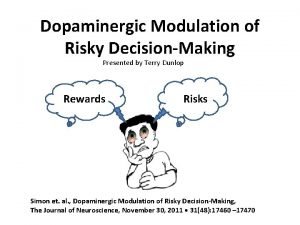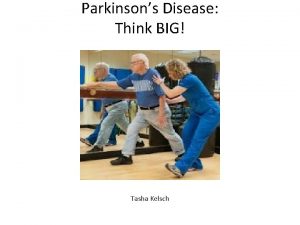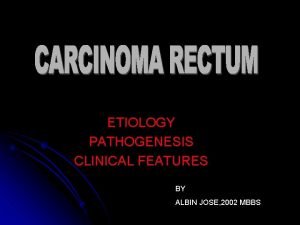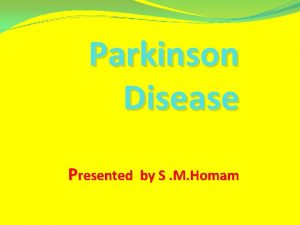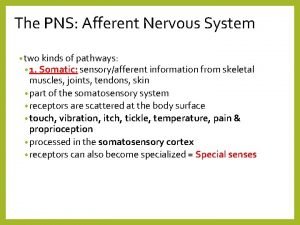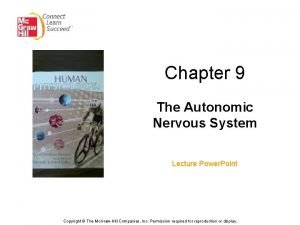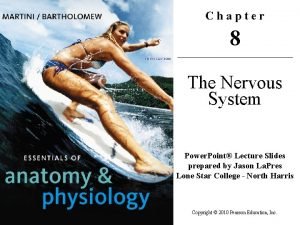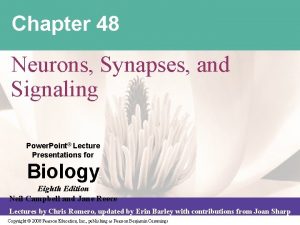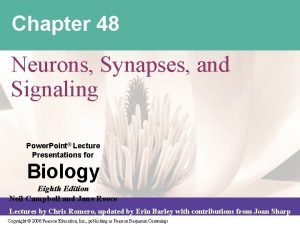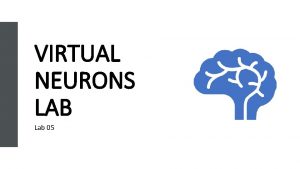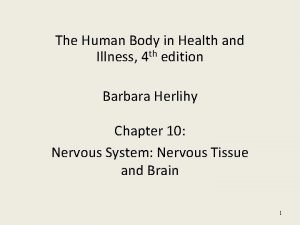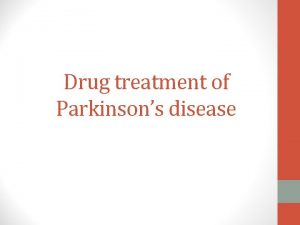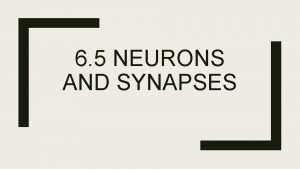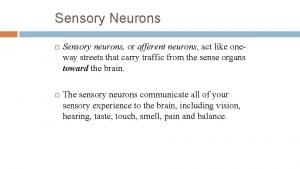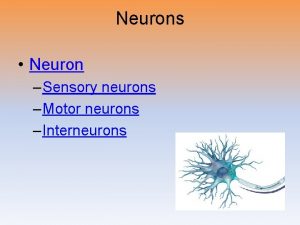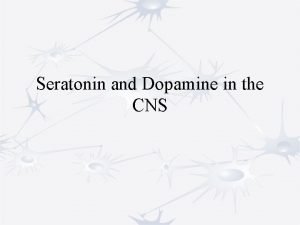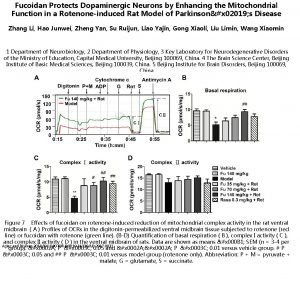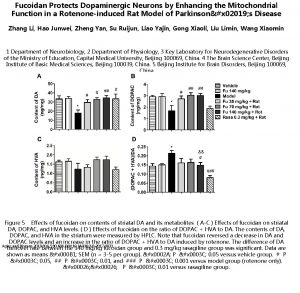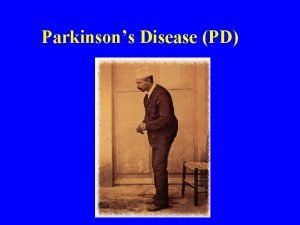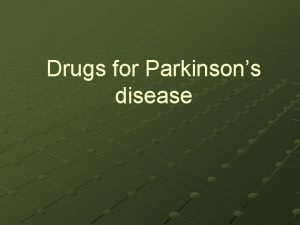Dopaminergic Neurons and how they relate to Parkinsons

















- Slides: 17

Dopaminergic Neurons and how they relate to Parkinson’s Disease

Neurons -Specialized nerve cell -About 100 billion in the brain -Main part of the nervous system! -Three types (motor, sensory, interneuron)

Picture of a Neuron (Structure) Dendrites send neural signals through axon terminals, which are picked up by the axon endings

Dopaminergic Neuron-Type of Neuron -At the neuron level -Dopamine is a chemical released by nerve cells to send to other nerve cells (neurotransmitter) -The dendrites receive such signals

Location of Most Dopaminergic neurons -Located in substantia nigra pars compacta part of human brain -Generally, relatively less DAergic neurons; in C. elegans (which has 302 neurons), only 8 of them are dopaminergic! (2 ADE, 2 PDE, 4 CPE) 6 are in head, 2 are in tail

Functions of Dopaminergic Neurons -Help with body functions -Make you happy (reward-motivated behavior, which also led to mankind producing stimulants like cocaine to increase dopamine) -Motor Control -Release of important hormones

If there are more of the DAergic neurons. . . then diseases like Parkinson’s or Alzheimer’s are less likely to occur -Dopamine Neurons regulate: voluntary movement, mood, reward, addiction, stress so even though they may be few in numbers, they are really important!

Parkinson’s Disease Symptoms -NO KNOWN CAUSE as to why the dopaminergic neurons in substantia nigra pars compacta suddenly degenerate, but this loss of DAergic neurons = neural level symptom -Other symptoms/effects of Parkinson’s Disease: tremor (motor), slow movement, rigidity, unstable posture. . . etc.

So the next question: What can be done to increase DAergic neurons in the substantia nigra pars compacta part of the brain of a person who has Parkinson’s Disease?

Exercise? -In C. elegans (a model organism that has a neural wiring that is similar to a microcosm of our own), locomotion at an early stage does help -Still tentative research, though

Dopaminergic neurons (#1)

Dopaminergic neurons #2

Exercise Could Possibly Help Research last year And in general, exercise increasing neurogenesis Why exactly, though?

EXPERTS DON’T KNOW Parkinson’s is a progressive disease, meaning that the dopaminergic neurons just keep on degenerating, on and on. . .

BUT we do know some causes: -Nothing on the neural level, but some links: -Exposure to pesticides leads to Parkinson’s Disease -Presence of clumped Lewy bodies; Asynuclein is found within Lewy bodies (again, to solve this, exercise is being tested)

To Sum up: We should care about dopaminergic neurons because: -they make us happy -they help regulate stress, behavior -too less of them --> neurodegenerative disorders, like Parkinson’s Disease or Alzheimer’s Disease!

Thanks for listening! sources: NCBI Parkinson’s Disease Foundation
 Dopaminergic
Dopaminergic Serpentine stare parkinson's
Serpentine stare parkinson's Parkinsons disease hereditory
Parkinsons disease hereditory Parkinsons disease
Parkinsons disease Rectosigmoid junction
Rectosigmoid junction Amantadin
Amantadin Behcet wiki
Behcet wiki Proprioceptors
Proprioceptors Somatic motor pathway
Somatic motor pathway Alpha and gamma motor neurons
Alpha and gamma motor neurons Medullary pyramids
Medullary pyramids Pre ganglionic
Pre ganglionic Figure 8-2 neurons and neuroglia
Figure 8-2 neurons and neuroglia Chapter 48 neurons synapses and signaling
Chapter 48 neurons synapses and signaling Chapter 48 neurons synapses and signaling
Chapter 48 neurons synapses and signaling Virtual neurons
Virtual neurons Homunculus
Homunculus Via optica
Via optica
